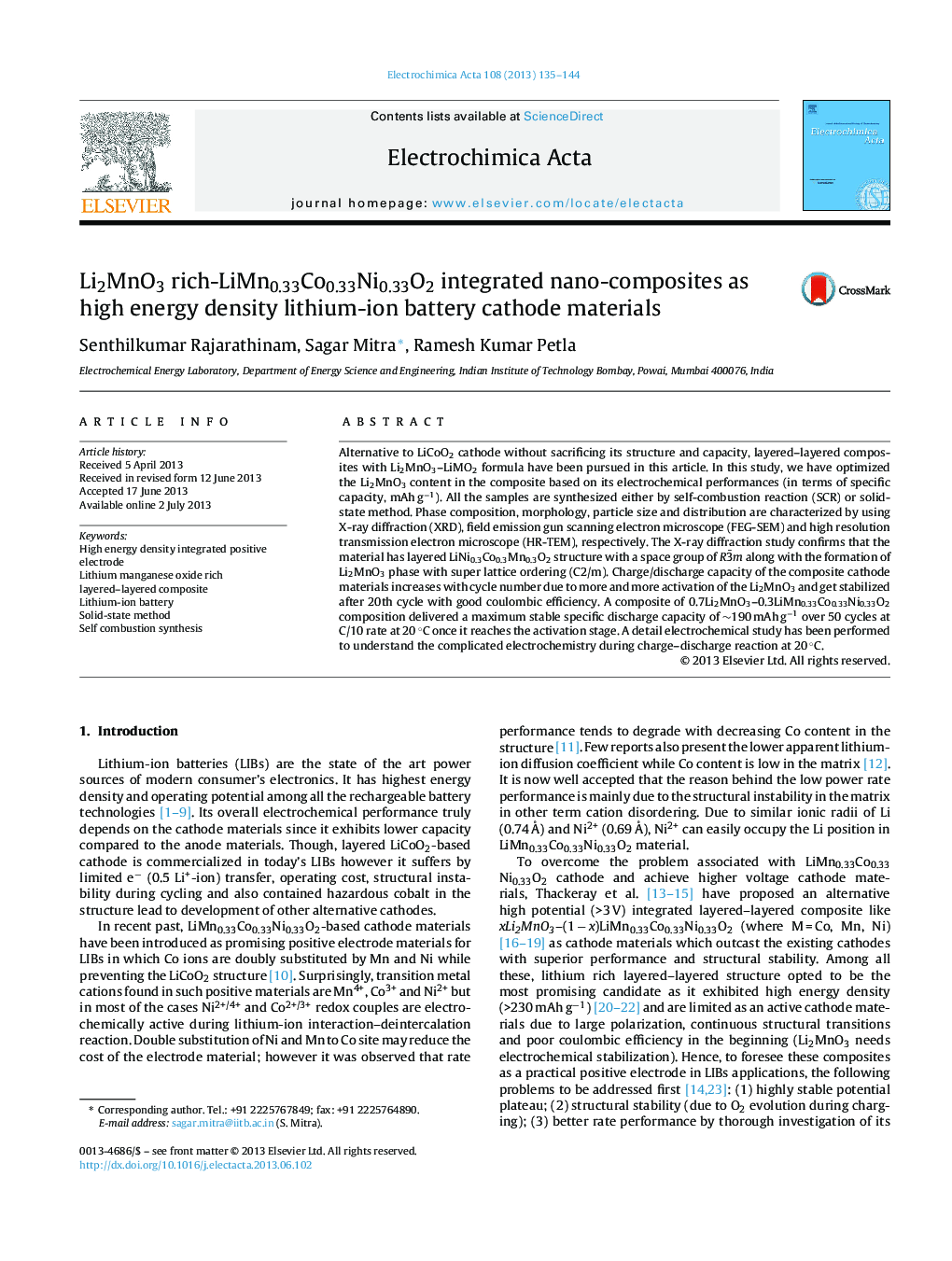| کد مقاله | کد نشریه | سال انتشار | مقاله انگلیسی | نسخه تمام متن |
|---|---|---|---|---|
| 186782 | 459624 | 2013 | 10 صفحه PDF | دانلود رایگان |

• Li2MnO3 rich Li2MnO3–LiMn0.33Co0.33Ni0.33O2 composite was prepared by solid-state method and self combustion method.
• Specific 0.7Li2MnO3–0.3LiMn0.33Co0.33Ni0.33O2 composition without any coating exhibited excellent electrochemical activity and stability against lithium.
• Detailed electrochemistry was investigated for Li2MnO3 rich composition.
Alternative to LiCoO2 cathode without sacrificing its structure and capacity, layered–layered composites with Li2MnO3–LiMO2 formula have been pursued in this article. In this study, we have optimized the Li2MnO3 content in the composite based on its electrochemical performances (in terms of specific capacity, mAh g−1). All the samples are synthesized either by self-combustion reaction (SCR) or solid-state method. Phase composition, morphology, particle size and distribution are characterized by using X-ray diffraction (XRD), field emission gun scanning electron microscope (FEG-SEM) and high resolution transmission electron microscope (HR-TEM), respectively. The X-ray diffraction study confirms that the material has layered LiNi0.3Co0.3Mn0.3O2 structure with a space group of R3¯m along with the formation of Li2MnO3 phase with super lattice ordering (C2/m). Charge/discharge capacity of the composite cathode materials increases with cycle number due to more and more activation of the Li2MnO3 and get stabilized after 20th cycle with good coulombic efficiency. A composite of 0.7Li2MnO3–0.3LiMn0.33Co0.33Ni0.33O2 composition delivered a maximum stable specific discharge capacity of ∼190 mAh g−1 over 50 cycles at C/10 rate at 20 °C once it reaches the activation stage. A detail electrochemical study has been performed to understand the complicated electrochemistry during charge–discharge reaction at 20 °C.
Journal: Electrochimica Acta - Volume 108, 1 October 2013, Pages 135–144